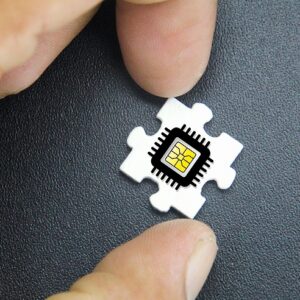After decades of watching American jobs being shipped overseas and other countries leapfrogging the United States in innovation, President Biden’s landmark bipartisan China competitiveness bill, the CHIPS and Science Act, is building a stronger and safer economy for all Americans, even as it provides an opportunity to work more closely with international partners.
One needs to look no further than the recent news to understand its potential.
Last week, Biden visited Phoenix to mark an announcement from Taiwan Semiconductor Manufacturing Co. (TSMC) that the firm plans to more than triple its investment to manufacture semiconductors in the state. The announcement marked the most significant private-sector investment in the crucial swing state and one of the largest direct foreign investments in the United States. The president was joined by Apple CEO Tim Cook, who announced the company would use these newly “Made in America” chips for its products.
In reshoring chip manufacturing to the United States, TSMC is creating good-paying American jobs, Apple and other manufacturers are fortifying their supply chains, and the Biden administration is leveraging the CHIPS Act to boost its strategy to neutralize the threat of foreign competitors like China.
With Taiwan producing nearly all of the globe’s advanced microchips used for essential products like phones and computers, China’s hostility to the island poses acute threats to the national and economic security of the United States and our allies.
Announcements like that from TSMC would only be possible with the economic incentives included in the CHIPS and Science Act. In fact, it is just one of several recent announcements crediting the Biden administration for making this progress possible. In August, Micron announced that, because of the bill, it would make a $40 billion investment in onshoring advanced manufacturing of semiconductors, creating 40,000 jobs and strengthening education and workforce development pipelines. GlobalFoundries, which makes advanced chips designed by QualComm, announced an expansion of its chip production capacity for 5G transceivers, Wi-Fi, autos and computers, among other goods, which will boost job creation in upstate New York. In September, Intel broke ground on a $20 billion semiconductor advanced manufacturing plant, representing the largest private-sector investment in state history and creating 7,000 jobs.
While chip production has received a fair bit of attention from the media since the bill was signed, the law’s support for scientific research and development has received less, which is ironic given McKinsey & Co. notes that about 70 percent of the $280 billion bill’s investments go toward scientific research and development and commercialization at the National Science Foundation, the Department of Energy and the Department of Commerce.
But a new development this week could change that. On Tuesday, Energy Secretary Jennifer Granholm announced that U.S. scientists produced carbon-free energy through a nuclear fusion reaction for the first time. The announcement follows decades of research and development support from the U.S. government. While it likely will take at least a decade or more to understand and maximize its full potential, if the energy can be sustained, scaled and ultimately commercialized, this government-backed research breakthrough could have implications for the global fight against climate change, national security and our economy.
The new law provides an opportunity for the United States to build on this and other exciting innovations while finding new ones to secure a healthier and safer future for all Americans.
Taken together, these developments show Biden’s economic plans are creating jobs and boosting manufacturing now while laying the groundwork for the United States to win the 21st century over the long term by making things in America again, out-innovating our peers, and keeping us safe from external threats like hostile, anti-democratic countries or a future global pandemic.
All of these factors will put downward pressure on costs for consumers. It’s one of the reasons the president’s party delivered the best performance in nearly a century in this year’s midterm elections, even in the face of headwinds like global inflation.
After decades of manufacturing decline, jobs being offshored, and a race to the bottom on wages for American workers, this new legislation is welcome news for those who have been left behind or feel squeezed by rising costs.

